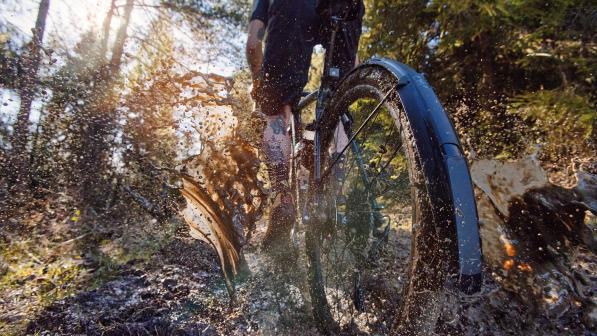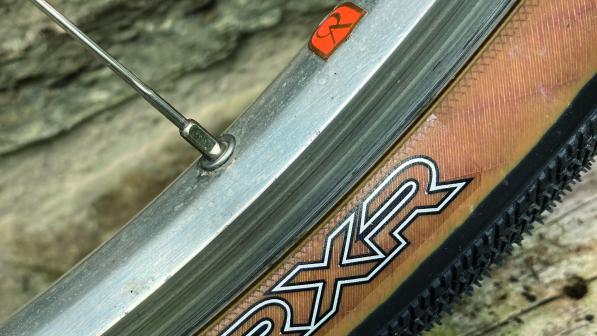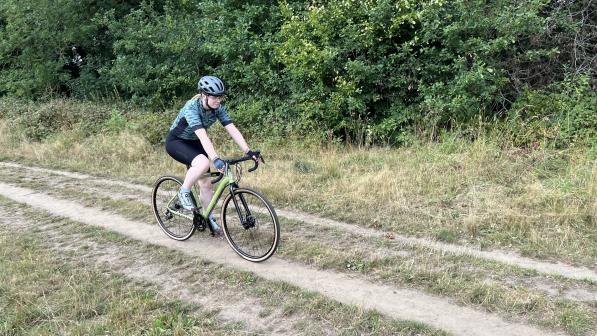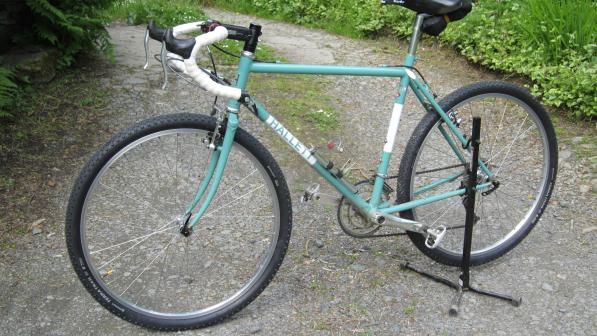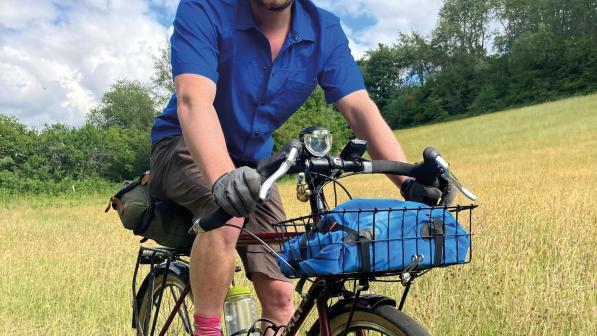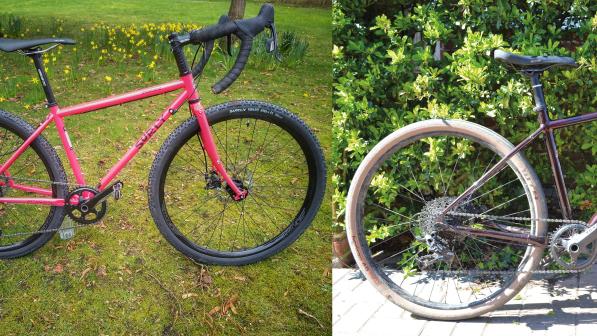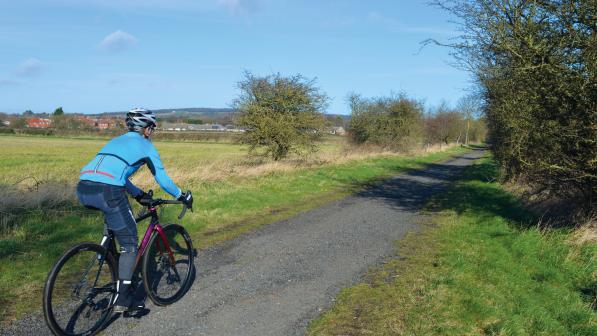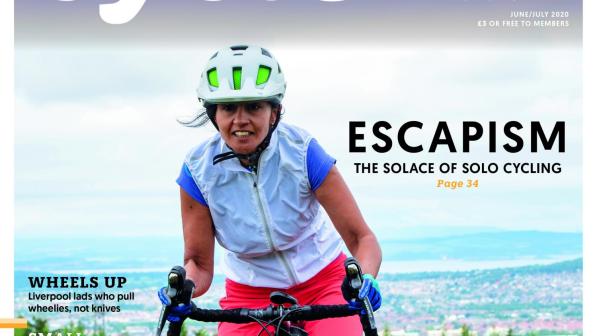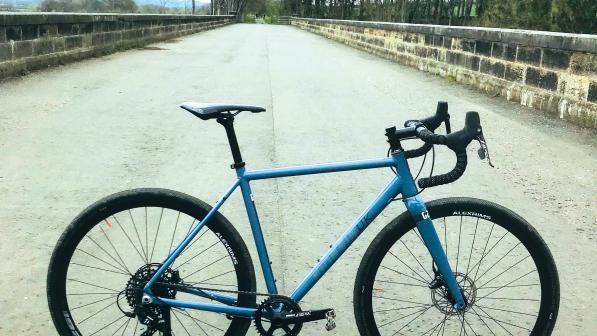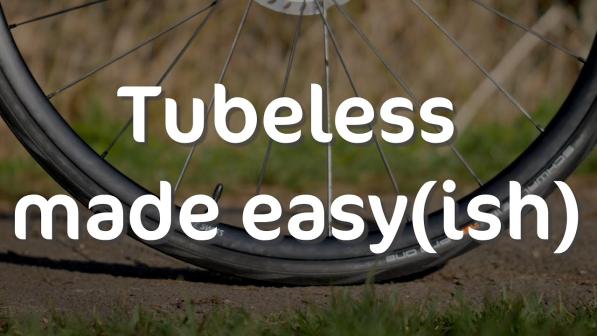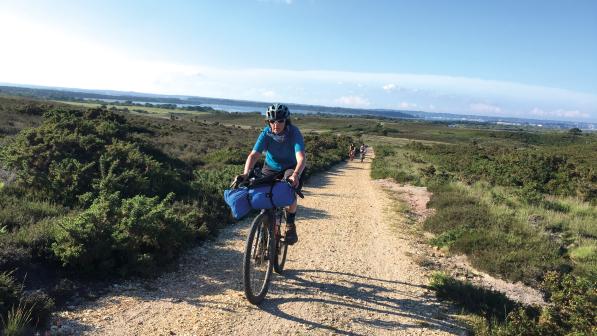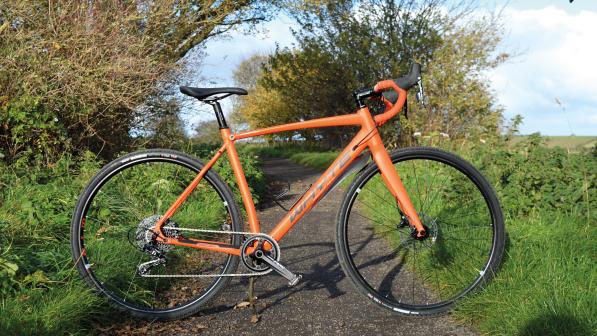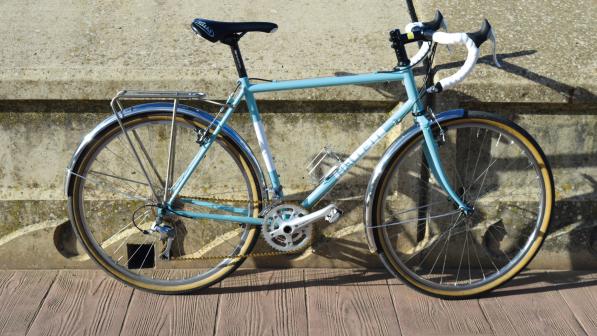Group test: Gravel tyres

‘Gravel’ means different things to different people but it’s easy to agree on what it’s not: hard asphalt. Instead, it can be anything from the hard-packed but loose-topped surface of a Tuscan strada bianca to a muddy, horse-churned British bridleway.
Gravel bike tyres are generally expected to have some road capability as well, so sections of unmade track can be incorporated into road rides – or vice versa.
This variety of surfaces a gravel bike might see makes tyre choice a trade off. On an extended road tour with the odd excursion along a forest trail, the rider may be willing to forgo traction in mud in favour of easier pedalling on asphalt, while an entrant in a gravel enduro event might opt for something close to a mountain bike tyre.
For the purpose of this test, I also rode the circuit’s steep, rocky descent on file-treaded 650×37B tyres, which in this spring’s dry conditions were as capable as any of the tyres featured. Had it been wet, the outcome may have been very different. On grass, too, a file or smooth tread performs poorly, especially when it’s damp.
1 Rene Herse Pumpkin Ridge
£74. Available from René Herse.

The 650×42B Pumpkin Ridge shares its big-block tread pattern with the 700×38C Stellacoom, 700×48C Hurricane Ridge, and 650×48B Juniper Ridge; they’re essentially four sizes of the same model. All are available in a lightweight version, although the 430g standard Pumpkin Ridge is already impressively light and supple.
It offers impressive off-road performance in any conditions. Acceptable on-road rolling performance is accompanied by a rumbling sensation and some whine on smooth surfaces, but it’s stable at speed and when cornering.
Verdict: Good looking, effective but rumbly all-rounder.
2 Schwalbe G-One All-Round TLE
£60 – £29.99 at the time of writing. Available from Wiggle.

Essentially a deeper-treaded version of the Schwalbe G-One Speed, the All-Round has lots of small knobbles with a slot across the middle. They’re closely packed, with the edge knobbles buttressed against the sidewall to improve stability.
While generally a tough tyre, experience with the G-One Speed suggests some susceptibility to sharp objects. On road, the All-Round rolls and grips well but with a slightly ‘wooden’, feel. It runs very nicely on dry gravel, rocks and stones but picks up mud, grass, or moss in the wet and clogs with the former.
Verdict: Impressive in the dry but with a tendency to clog up.
3 Surly Knard 650×41B Tubeless
£59.99 – £39.99 at the time of writing. Available from Triton Cycles.

Boasting an aggressive, old-school tread pattern, Surly’s Knard is basically a dialled-back mountain bike knobbly. Not surprisingly, it’s very effective on all sorts of unmade surfaces and, thanks to the sharp edges of the widely-spaced square tread blocks, especially so when the going is slippery.
Set against that, the tread causes significant squirm on asphalt and lessens cornering stability. At 510g in this 650×41B size, the Knard is no lightweight and inevitably feels sluggish on road, the surface on which it is least at home.
Verdict: Serious off-road rubber with limitations on tarmac.
4 Continental Terra Speed
£59.95. Available from Continental.

The fastest-rolling tyre on road in this test, Continental’s Terra Speed uses small, roughly hexagonal knobbles. They are larger and widely spaced over the sides but smaller and clustered more closely around the centre line.
There’s a fair bit of space between them to minimise the possibility of clogging by mud, and the shallowness of the knobbles limits squirm on the road. High-speed cornering isn’t as serene as with the Pumpkin Ridge.
At 400g in this size, the tyre is light and responsive, but expect rapid tread wear if using the Terra Speed for extensive road mileage.
Verdict: Faster than it looks both on road and off.
Overall verdict
The four tyres on test are all-rounders that are capable on road and off, but with a bias towards the latter. This incurs a penalty on the road – just how much of one depending on the tyre’s ability elsewhere.
While there are better options for road mileage with occasional careful departures from tarmac, any one of these four will offer greater grip, security, stability than a file-treaded, wide road tyre in almost any off-road situation.
While three of the group will handle extended road mileage between gravel sections, the Surly is very much a dirt tyre that can ‘do’ tarmac at a push on the way to an off-road trail.
